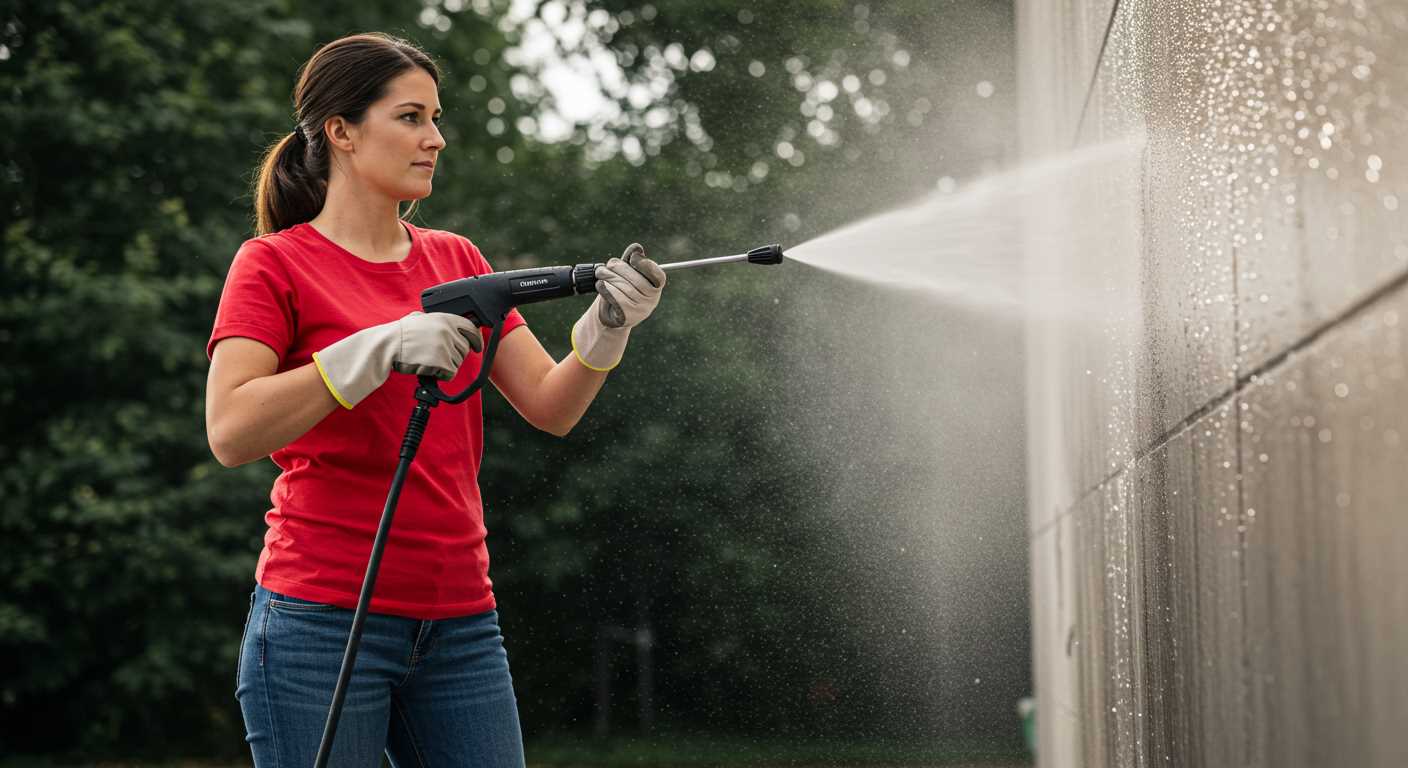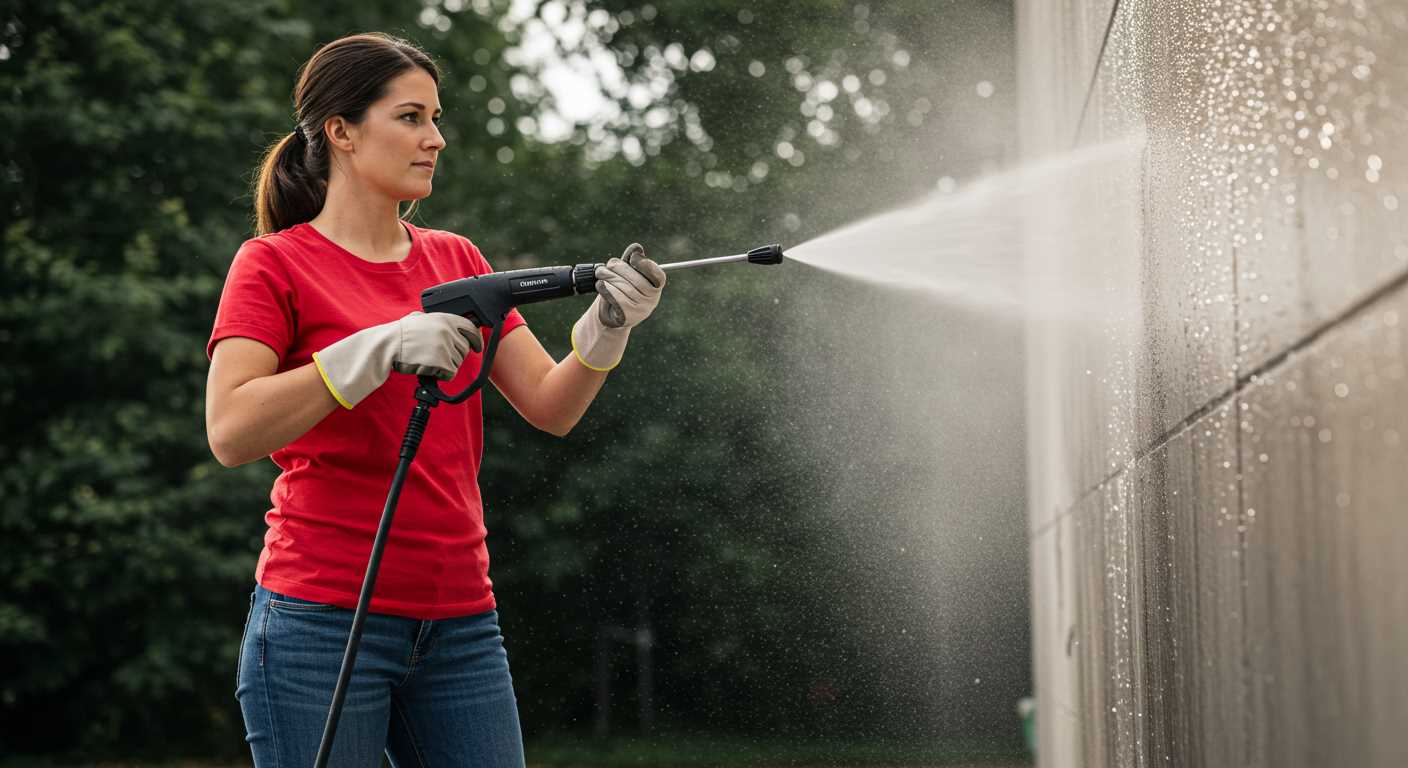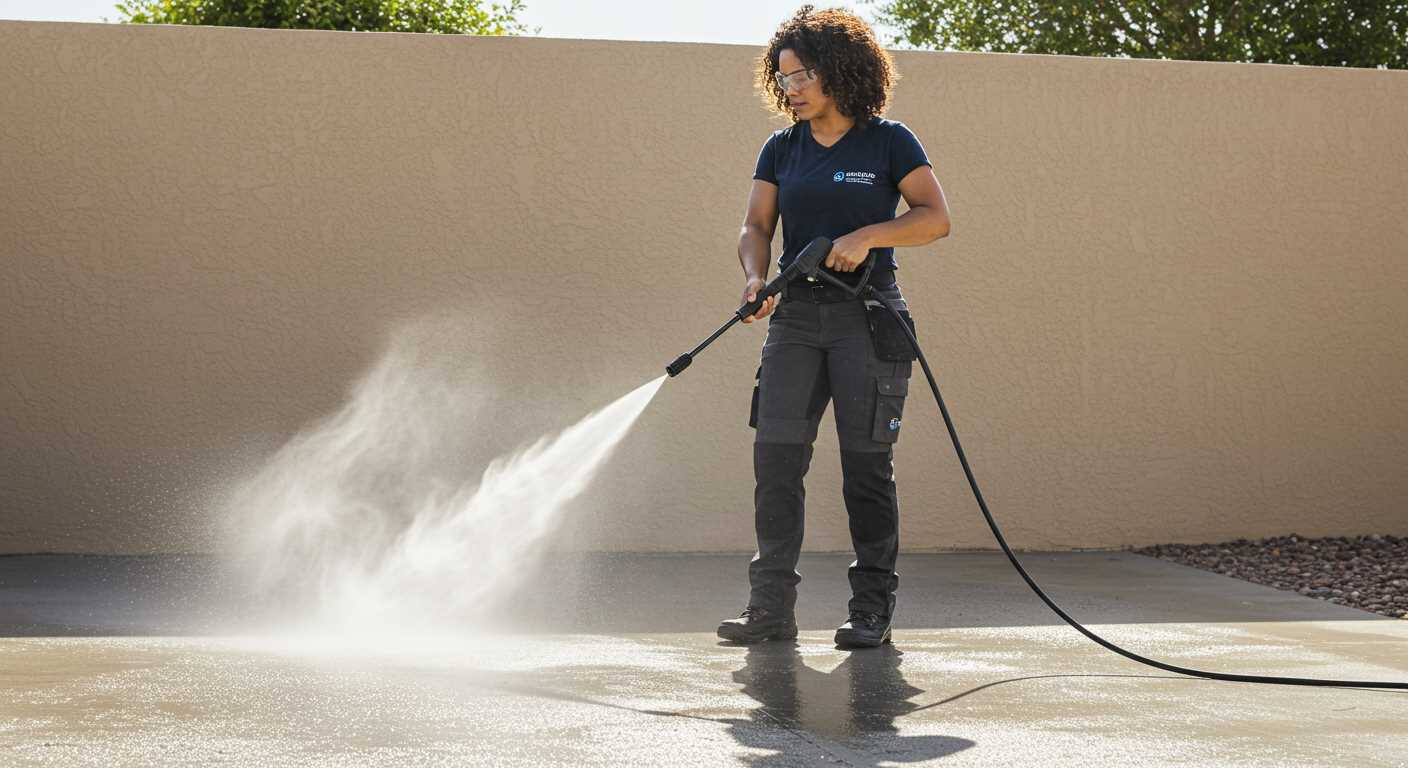




First things first, check the power source. Ensure the outlet is functioning properly and that the extension cord, if used, is rated for the necessary amperage. A faulty outlet can disrupt the flow of electricity, causing the unit to shut down unexpectedly. I once encountered a situation where a colleague’s device would stop working midway through a job, only to discover it was plugged into a loose connection that had wiggled free.
Next, inspect the thermal overload protection. Many models come equipped with this safety feature to prevent overheating. If the motor feels excessively hot to the touch, allow it to cool down before attempting to restart. This safety mechanism saved my equipment during a particularly prolonged cleaning session when I was working on a large driveway. I realised that taking breaks not only protected my gear but also improved my overall efficiency.
Another point to consider is the water supply. Ensure that the hose is free from kinks and that the water inlet is not blocked. A restricted water flow can lead to the motor working harder than necessary, resulting in shutdowns. During one project, I discovered that a small piece of debris in the filter was the culprit behind a recurring issue. Cleaning the filter regularly can save you from unnecessary frustration.
Lastly, check for any signs of electrical issues within the unit itself. Loose connections or damaged wires can lead to intermittent power loss. I once had to replace a frayed wire in my own machine after a similar problem arose, and it made a world of difference. Taking the time to inspect and maintain your gear can extend its lifespan and reliability significantly.
Common electrical issues causing interruptions
Check the power source. A loose or damaged extension cord can lead to insufficient voltage, causing the motor to stall. I’ve seen it plenty of times when users overlook their cords. Ensure connections are secure and inspect for any visible wear.
Examine the circuit breaker. If the device is on a circuit that’s overloaded, it might trip frequently. I once had a client using multiple high-drain appliances on the same circuit, leading to constant interruptions. Reallocating the load can help resolve this issue.
Inspect the on/off switch. Sometimes, a faulty switch can create intermittent power loss. I’ve replaced switches in several units after users reported erratic behaviour. If you notice the switch feeling loose or unresponsive, it might need a replacement.
Look for signs of moisture. Water can infiltrate electrical components, leading to short circuits. I recall a situation where a client stored their unit outside, and moisture damaged the internal wiring. Keep the device dry and stored in a sheltered area to prevent such problems.
Evaluate the motor brushes. Worn-out brushes can cause performance issues, including unexpected stoppages. I recommend checking these regularly; in one case, a simple brush replacement solved a persistent cutting issue for a customer.
Consider thermal overload protection. Many models come equipped with this feature to prevent overheating. If the motor gets too hot, it will shut down to protect itself. I’ve often advised users to take breaks during prolonged use to allow the unit to cool down.
Lastly, verify the power rating. Using a unit with a different power requirement than specified can lead to inconsistent operation. I’ve seen users inadvertently connect to incorrect outlets, resulting in underperformance. Always check the specifications before plugging in.
Impact of Overheating on Pressure Washer Performance
Overheating can severely affect the functionality of your cleaning device. When the internal components reach excessive temperatures, several issues may arise. First, the motor may operate inefficiently, leading to reduced pressure output. Second, seals and gaskets can degrade, causing leaks that further diminish performance.
To prevent these problems, consider the following:
- Ensure adequate ventilation around the unit during use.
- Take breaks during extended cleaning sessions to allow the machine to cool down.
- Regularly check and clean the filters to improve airflow.
- Monitor the water temperature; using hot water can contribute to overheating.
In my experience, I’ve seen many users overlook the importance of cooling. One time, a customer complained about persistent interruptions. Upon inspection, I discovered the unit was overheating due to blocked air intake. After a thorough cleaning, the performance improved dramatically. Simple maintenance can save you from costly repairs.
Another common mistake is running the equipment without sufficient water supply. This can lead to dry running, causing the motor to overheat quickly. Always verify that the water source is adequate before starting your work.
In conclusion, monitoring temperature and airflow while maintaining your device can significantly enhance its longevity and performance. Addressing overheating issues promptly will keep your cleaning tasks efficient and effective.
How to check for water supply problems
Verify the water source first. Ensure the tap is fully open and the hose is connected securely. A common issue I’ve encountered is a kinked hose. This restricts flow significantly, leading to performance issues. Inspect the entire length of the hose for twists or bends.
Next, check for blockages in the inlet filter. This small mesh screen can become clogged with debris over time. Remove it and rinse under running water to clear any buildup. A clean filter allows for optimal flow, enhancing overall functionality.
Examine the water supply pressure. Ideally, it should be between 20 and 80 PSI. If it’s below this range, the machine may not receive enough water to operate efficiently. You can test the pressure using a pressure gauge attached to your tap.
Keep an eye on the water temperature as well. If it’s too hot, it can cause issues with internal components. Always use cold water unless the manufacturer specifies otherwise.
If you’re experiencing persistent issues, consider the local water supply. Fluctuations in supply can affect performance. I once faced a situation where my unit struggled due to low municipal water pressure during peak usage times.
For those times you can’t use a high-pressure cleaner, there are alternative methods for maintaining surfaces. Check out this guide on cleaning paving stones without a pressure washer for effective techniques.
Identifying faulty components in your pressure cleaner
Start your troubleshooting by inspecting the power cord and plug. Look for any signs of damage such as fraying or exposed wires. If you spot any issues, replacing the cord is essential to prevent electrical hazards.
Next, examine the motor. Listen for unusual noises when the unit operates. A humming sound might indicate a problem with the motor’s brushes or windings. If the motor overheats or stops working entirely, testing with a multimeter can reveal if it’s receiving the proper voltage.
Check the switch and connections. Sometimes, a faulty switch can interrupt power supply. Test the switch for continuity with a multimeter. If it’s defective, replacing it is straightforward and will restore functionality.
Inspect the pressure sensor and thermal relief valve. A malfunctioning pressure sensor may trigger shut-offs, and a faulty thermal relief valve can cause overheating. Ensure they’re clean and functioning correctly. If you find any blockages, clear them to ensure optimal performance.
Lastly, consider the pump. Look for leaks around the pump housing. A worn-out seal can lead to a loss of pressure and operational issues. If the pump shows signs of wear, a rebuild kit or replacement may be necessary.
- Power cord and plug: Check for damage.
- Motor: Listen for unusual sounds; test with a multimeter.
- Switch: Test for continuity.
- Pressure sensor and thermal relief valve: Ensure they’re clean and functioning.
- Pump: Inspect for leaks and wear.
Using these steps, you can identify faulty components more effectively. Each part plays a critical role in ensuring smooth operation, so careful examination is key.
Maintenance Tips to Prevent Frequent Cut-Outs
Regular checks of the power supply and connections can significantly reduce interruptions. Ensure the extension cord is rated for the required voltage and amperage. I’ve seen many situations where inadequate cords led to overheating and subsequent failures.
Cleaning the filter and nozzle is another straightforward yet often overlooked task. Debris buildup can restrict water flow, causing the unit to overwork and shut down. After each use, I recommend rinsing the filter under running water and inspecting the nozzle for clogs.
Additionally, storing your equipment in a dry, temperature-controlled environment helps prevent moisture damage to internal components. I recall a time when a client faced persistent issues due to rust forming on the motor. A simple change in storage habits resolved the problem.
| Maintenance Task | Frequency | Notes |
|---|---|---|
| Inspect power cord and connections | Every use | Look for wear and ensure a secure fit. |
| Clean water filter | Weekly | Rinse thoroughly to avoid clogs. |
| Check nozzle for blockages | After each use | Clear any debris for optimal performance. |
| Inspect and clean pump | Monthly | Follow manufacturer recommendations. |
| Store in a dry place | Year-round | Protect against moisture and rust. |
Additionally, keeping an eye on the water supply pressure is crucial. Sudden drops can trigger safety mechanisms that cause the system to shut down. I’ve encountered instances where a faulty tap was the root of the issue, leading to frustrating downtime.
Finally, always refer to the user manual for guidance on specific maintenance tasks and schedules unique to your model. This ensures that you’re aligned with the manufacturer’s recommendations, which can provide valuable insights into enhancing longevity and performance.
Understanding the Role of Pressure Settings
Adjusting the pressure settings is paramount for optimal performance. When I worked with various models, I noticed that incorrect settings often led to operational issues. If the pressure is set too high, the motor can struggle, causing it to overheat and shut down. Conversely, too low a setting might not provide adequate cleaning power, prompting the unit to work harder and potentially cut off.
In my experience, always refer to the manufacturer’s guidelines regarding recommended pressure levels for different tasks. For instance, using a lower setting for delicate surfaces like wood prevents damage while still achieving satisfactory results. I recall a time when I mistakenly used high pressure on a patio furniture set; it not only left marks but also strained the motor, leading to frequent interruptions.
Regularly checking the pressure gauge is a good habit. If you notice fluctuations during operation, it could signal underlying issues, such as clogs or worn-out components. Keeping the settings balanced according to the surface being cleaned can significantly reduce the risk of your device shutting down unexpectedly.
Lastly, experimenting with different pressure levels based on your needs has taught me that finding the right balance is key. This can enhance the lifespan of the equipment and improve cleaning efficacy. Always keep an eye on how the machine responds to various settings, and adjust accordingly to maintain smooth operation.
Troubleshooting steps for persistent issues
Start by inspecting the power source. Ensure the outlet is functioning properly by testing it with another appliance. A faulty socket can lead to intermittent power supply.
Next, check the extension cord. Using a cord that is too long or not rated for the power requirements can cause voltage drops. If unsure, replace it with a shorter, heavier gauge cord. This simple change can often resolve ongoing interruptions.
Evaluate safety features
Examine the overload protection feature. Many models have an automatic shut-off to prevent damage from overheating. If this feature is activating too frequently, it might indicate deeper issues, such as blockages or low water supply. Cleaning filters and ensuring sufficient water flow can help maintain optimal performance.
Inspect internal components
Open the casing and look for any signs of wear or damage. Pay attention to the motor and pump connections. Loose wires or corroded terminals can disrupt operation. Replacing worn components can restore functionality. While you’re at it, you might also want to check out this guide on how to clean an aquarium air stone for related maintenance tips.
FAQ:
Why does my electric pressure washer keep cutting out after a few minutes of use?
There are several reasons your electric pressure washer might cut out. One common cause is overheating. If the motor gets too hot, the thermal overload switch will activate, shutting off the machine to prevent damage. This can happen if the washer is being used for an extended period without breaks. Another possibility is a blockage in the water supply, which can cause the pump to strain and shut down. Ensure that there is a steady flow of water and check for any kinks in the hose or obstructions in the inlet filter. Lastly, ensure that the power source is stable; fluctuations in voltage can cause the washer to turn off unexpectedly.
What should I check if my electric pressure washer stops working suddenly?
If your pressure washer stops working suddenly, start by checking the power supply. Make sure it is plugged in securely and that the outlet is functioning. You can test the outlet with another device to confirm. If the power supply is fine, inspect the water supply. Ensure that the hose is not kinked and that the water source is turned on. Additionally, check the filter and nozzle for clogs, as these can impede performance. If everything appears normal, the motor or pump may have developed a fault, and you might need to consult the manual for troubleshooting or contact a professional for repairs.
Can using the wrong detergent cause my electric pressure washer to cut out?
Yes, using the wrong detergent can lead to issues with your electric pressure washer. If the detergent is too thick or not suitable for your model, it can clog the system, causing the pump to work harder than it should. This strain can lead to overheating and trigger the thermal protection switch, cutting off power to the machine. Always refer to the manufacturer’s guidelines regarding the types of detergents that are safe to use with your pressure washer to avoid such problems.
Why does my pressure washer make a clicking sound before cutting out?
A clicking sound from your pressure washer before it cuts out can indicate a few issues. One common reason is the activation of the thermal overload protection. If the motor is overheating, the system may click as it tries to restart after shutting down. Additionally, a clicking sound may also suggest a malfunctioning switch or a problem within the pump. If you hear this sound, it’s advisable to turn off the machine, allow it to cool down, and inspect for any visible blockages or damage before attempting to use it again.
How can I prevent my electric pressure washer from cutting out during use?
To prevent your electric pressure washer from cutting out, ensure you are using it according to the manufacturer’s guidelines. Take regular breaks to avoid overheating, especially during prolonged use. Make sure the water supply is adequate and that hoses are free from kinks or blockages. Using the correct detergent and maintaining the machine by cleaning filters and nozzles will also help. Regular checks on the power supply, including the extension cord and outlet, can prevent electrical issues that may cause the washer to shut down unexpectedly.
What are the common reasons why my electric pressure washer keeps cutting out?
There are several reasons why your electric pressure washer might be cutting out. One common issue is overheating. If the machine runs for an extended period without breaks, it can overheat and shut off as a safety measure. Another reason could be a clogged filter or nozzle, which can restrict water flow and cause the motor to strain. Additionally, issues with the power supply, such as voltage fluctuations or a tripped circuit breaker, can also lead to the machine shutting down unexpectedly. Regular maintenance and ensuring proper usage can help prevent these problems.
How can I fix my electric pressure washer if it keeps shutting off unexpectedly?
If your electric pressure washer is shutting off, there are a few steps you can take to troubleshoot the issue. First, check for overheating. Allow the machine to cool down before using it again and ensure you are not running it continuously for too long. Inspect the filter and nozzle for any blockages; cleaning them can improve performance. Make sure the power source is stable and that the extension cord you are using is rated for the machine’s power requirements. If these steps do not resolve the issue, it might be worth consulting the user manual or contacting a professional for further assistance.




.jpg)


